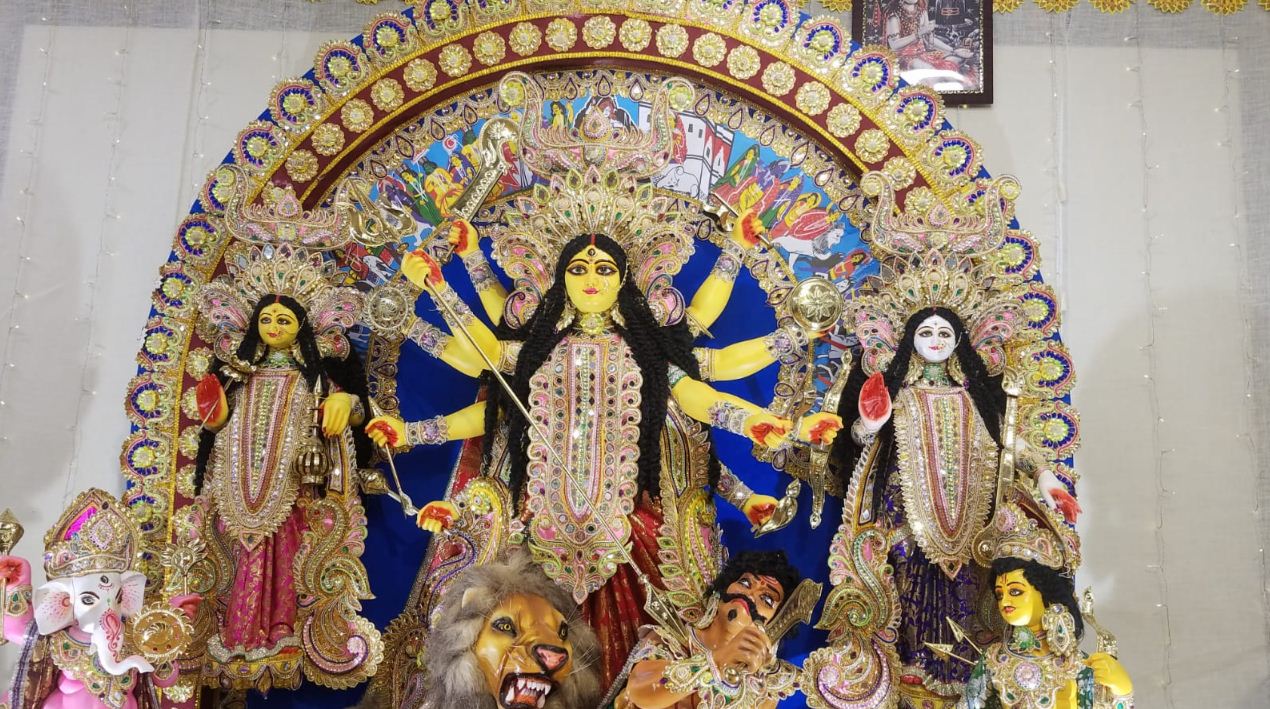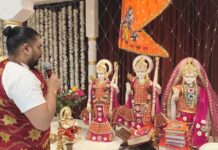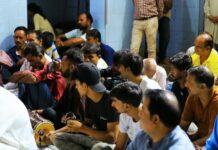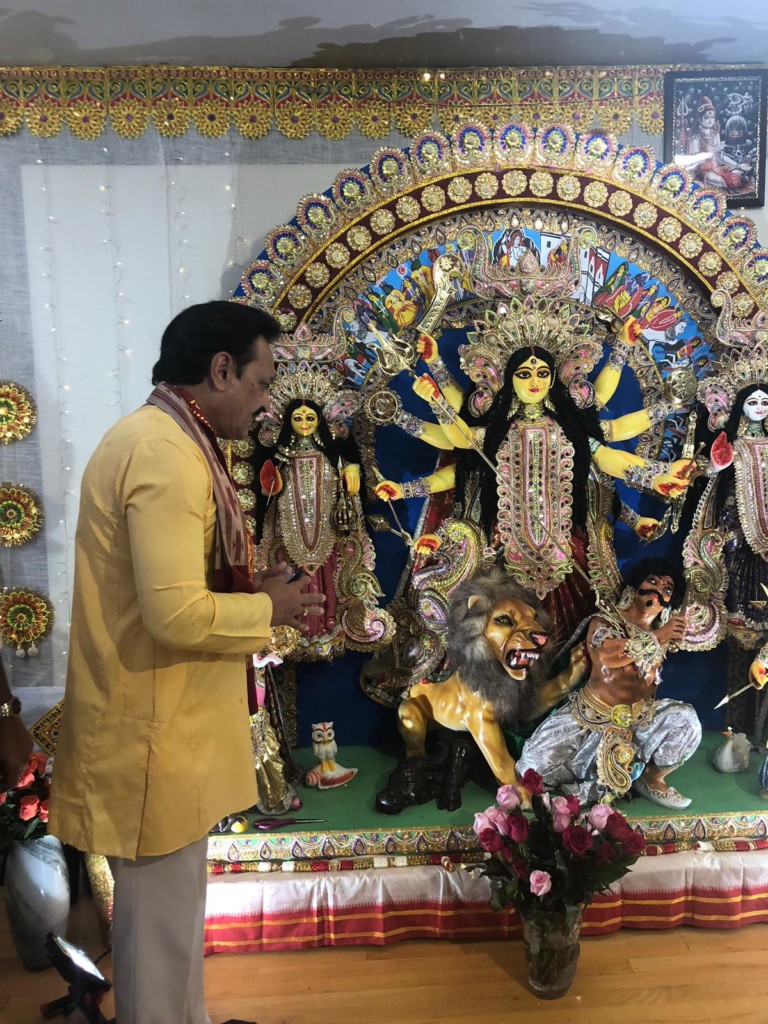
Lakshmi Iyer
India Post News Service
FREMONT, CA: FOG Bengal, the Bengali association wing in Festival of Globe (FOG) – FOG is under the Federation of Indo Americans of Northern California, known as FIA – organized a grand Durga Puja celebration at the Fremont Hindu Temple from October 13 to 18. For Bengalis, it was like a trip to their hometowns and for everyone, it was an occasion of piety, celebration and community.
Durga Puja is part of the Hindu festival of ‘Navaratri’ (Nine Nights), that is celebrated in honor of the Goddess Shakti or Durga or Kali as she is known among many other names. Legend has it that the Divine Mother Goddess Durga, fought and slayed the evil, arrogant demon, Mahishasura.
Women dress up in their finery, fast, pray and dance in circles during the evenings.
While every part of India celebrates this festival in its own way, the state of West Bengal in the eastern part of India is famous for its community celebrations that bring in giant idols of the Goddess into local areas and organize cultural festivities in Her honor.
The group brought in the idols of Goddesses Durga, Lakshmi and Saraswati from Kumartuli in Kolkata, India. On Saturday, October 13, the idols were first displayed during the inauguration conducted by the Founder of the temple and the Festival of Globe (FOG), and the publisher of this paper, Bay Area cardiologist Dr. Romesh Japra.
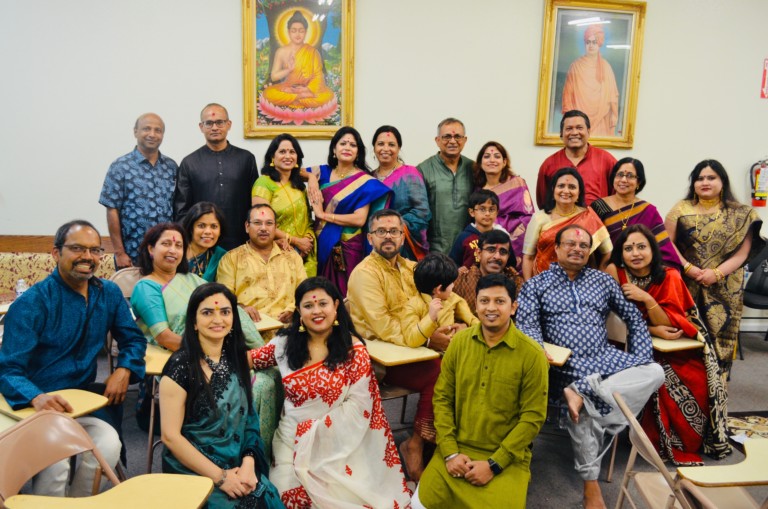
Prominent members of FIA/FOG, many of who are also Fremont Hindu Temple trustees like FIA President Rajesh Verma, Parade Chair Deepak Chhabra, Manorama Joshi, were also present. FOG sponsor, founder of Astro Vastu Solution US, Vaneet Sharma, addressed the gathering during the ceremony.
Ms. Teresa Keng, who is running for a seat on the Fremont City Council, was one of the distinguished guests in attendance.
The priest, Mr. Jayanto Panda, is a scientist at NASA by profession and a FOG Bengal volunteer. The specialty of this Puja was that Mr. Panda recited the Sanskrit ‘shlokas’ or invocations and translated them in English for the assembled devotees. A very educated gentleman, he aspires to pass on the traditions of his motherland to the next generation through spirituality.
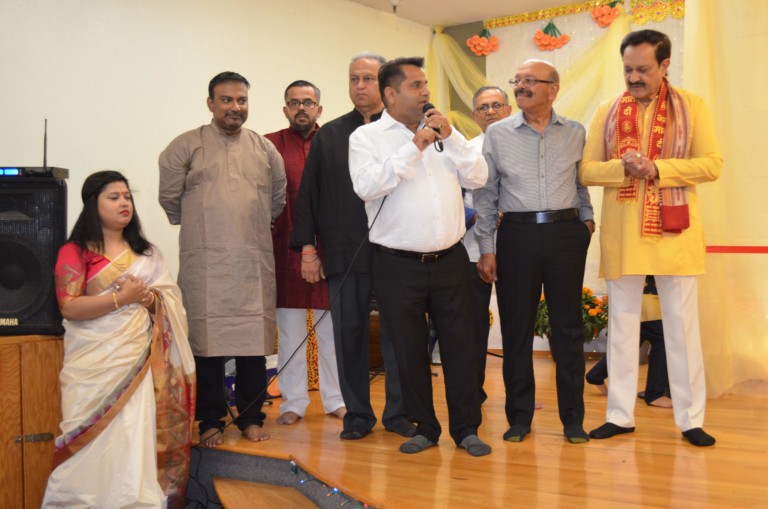
Durga Puja in Bengal is not just a religious occasion, but a social and cultural one, too. So it was here in Fremont with dance and music performances. “Bosey Anko” – a tradition in which children sit and draw, was also part of the program. Many kids brought out their talent on paper, from images of Durga Ma to religious symbols such as cobras.
The first day also had a special light music performance by well known singers, Rupsa Dutta and Sachin Srivastava, who regaled the crowd with hit songs.
Typically, on Ashtami, the eighth day of the nine day festival of Navratri (Durga Puja is a part of it), young girls (those who have not yet attained puberty) are honored. Thus, Kumari (a young, unmarried girl) Puja was performed with dance performances. Sandhi Puja, in which many lamps were lighted as offerings, was part of the rituals, too.
On the ninth day, Navami or Maha Nabami as the Bengalis call it, the Goddess of Learning, Saraswati, is honored. At the temple, a special ceremony with a lit fire, called a ‘Havan’, was performed, to propitiate the ‘Nava Grihas’ or Nine Planets and Heavenly Bodies – the Sun, Moon, Mercury, Venus, Mars, Jupiter, Saturn, ‘Rahu’ and ‘Ketu’ (In Western astrology, ‘Rahu’ and ‘Ketu’ are known as the North and South Nodes of the moon respectively).
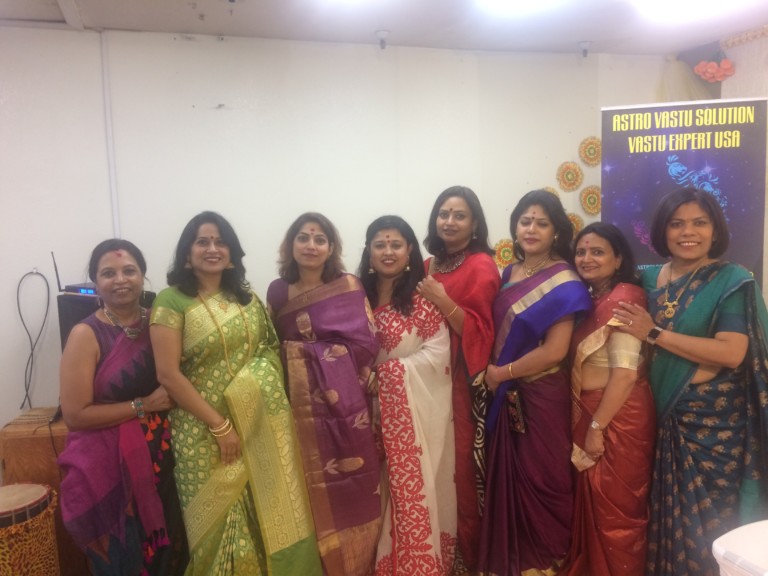
In Bengal, an animal sacrifice is performed to appease Goddess Durga. Instead of that, FOG Bengal volunteer Debashish Chandra made a sacrificial offering of bottle gourd (a vegetable commonly consumed in India).
On the tenth day, known as Dussehra or Vijayadasami, a practice known as ‘Sindur Khela’, in which women smear each other with vermilion paste (‘sindur’ – with which married Hindu women anoint themselves while their husbands are still alive) was carried out.
At the end, devotees bid adieu to the idol of the Goddess, also known as ‘Bisarjan’ – a farewell procession.
Dinner or ‘Preeti Bhoj’ was served at the temple during those days and traditional Bengali dishes such as ‘luchhi’ (a fried, fluffy bread also known as ‘puri’ in other parts of India), and ‘chhole’ – chickpeas with spices and traditional ‘chana’ dal were served.
The temple also had a free ‘dandiya’ night every evening from October 9th to the 18th. (‘Dandiya’ is a traditional dance performed in groups with each dancer holding a pair of sticks).
Throngs of devotees participated in the festivities and enjoyed the season of feasting, dancing, dressing up and of course, celebrating the Divine Feminine

